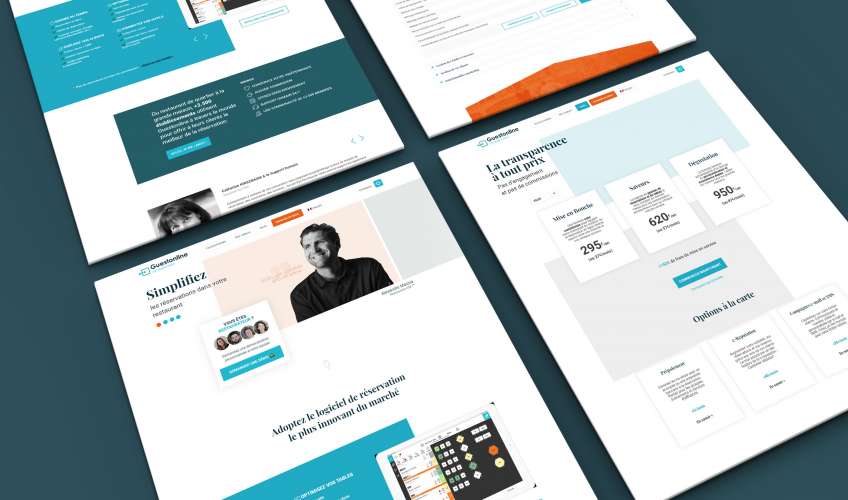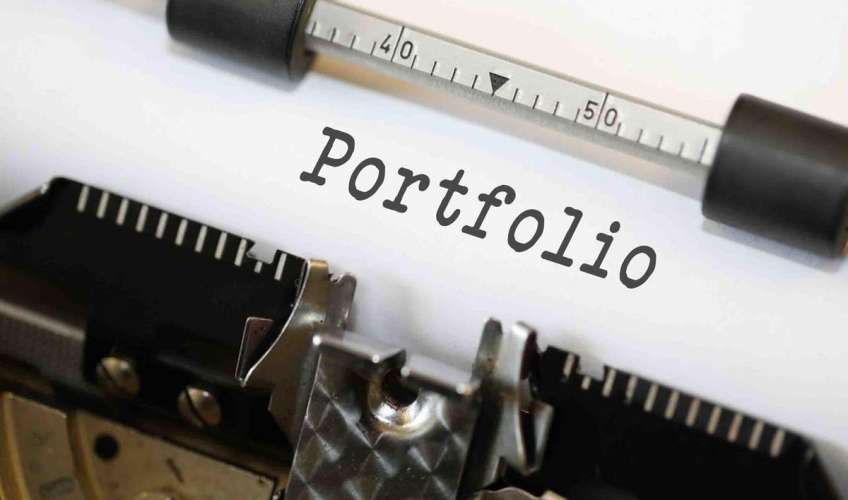Professional portfolio
Published: 15.10.2021

Portfolio is a professional resume for representatives of creative professions. The portfolio of a model, actor, animator, presenter, singer is a unique story of the individual's achievements, an opportunity to demonstrate their best qualities to a potential client. If the document is prepared correctly, its owner stands out favorably among competitors.
A professional portfolio is a collection of your work and information about you as a professional. The difference between a portfolio and a resume is that a resume reflects who you have worked for and what you have done, while a portfolio reveals the details.
The simplest example is an artist or writer. They gather their published works and pieces of art and showcase them to potential employers. But even those who are far from art can use examples of their work to demonstrate their skills. A marketer can compile analytical reports reflecting the success of their campaigns. An accountant's portfolio may include Excel tables and formulas created to simplify audits.
Previously, portfolios were presented in a luxurious folder with a hard cover and brought to interviews. Today, the same function is performed by an online portfolio or a personal website.
What should a professional portfolio look like
A professional portfolio is a collection of examples and evidence demonstrating your experience, abilities, and potential for employment opportunities and professional development. Your portfolio should include written and visual overviews of projects and important work in which you have been involved. Here are some tips on what a professional portfolio should be like:
- Make a digital copy. You can create your own website on WordPress or one of the online builders. Typically, this task does not require programming or web design knowledge. You can choose from available templates and fill them with your photos and text. Your social media page can be used as a portfolio. For example, Instagram can serve as a business card, a unique story of your achievements. Post well-thought-out photos and short descriptions. Don't forget to choose a short memorable nickname and include a link to your social media in the paper copy of your portfolio.
- Choose high-quality photos. Ideally, it should be a professional studio photoshoot. Think about a consistent style for your portfolio and try to stick to it. Earlier, we wrote,Where to find templates for a portfolio.
- Highlight the main points. Include in your portfolio facts and professional achievements that are relevant to your dream job. For example, a dramatic actor should mention experience in the relevant genre. A host or entertainer should include interesting events - original concerts or parties in unusual locations.
- Structure the information. A digital or paper portfolio should be easily understandable. Key achievements should not get lost among an abundance of unclear photos or boring project descriptions.
- with an abundance of unclear photos or boring project descriptions. Keep it current. Outdated portfolios will not attract attention. There is no need to mention achievements from twenty years ago. The exception is international or national awards (those are definitely worth mentioning!). Regularly update your portfolio so that your clients see that you are keeping up with the times.
- Quality is more important than quantity. Have you played dozens of roles or organized hundreds of events? Whatever you have done, you need to narrow down the list to a few outstanding achievements. This way, the attention of your potential client or employer will not be scattered.
Visual or text?
When creating a professional portfolio, a balance between the textual and visual parts is needed. Long text can quickly become boring. Adding photographs increases the attractiveness of your portfolio. It is important not to forget to use high-quality images that are visually appealing. Some minor editing or Photoshop may be required to give the photos clarity.
It is difficult to overestimate the importance of appearance for a representative of a creative profession. The face is the actor's business card. Expressive facial expressions, vivid images, and gestures can leave a lasting impression. In an actor's portfolio, it is worth including close-up photos, as well as general shots from movies or photos of the theatrical stage.
For a host, toastmaster, or entertainer, it is important to convey a good mood and a lively atmosphere at the celebration. Add photos "at work" - during the party, with a microphone in hand. It is important that not only the host is visible, but also the guests. Take several wide-angle photos that show how much fun people are having around.
Do not write too much. Use images. The goal of a portfolio is to attract interest, encourage a potential employer to schedule a meeting. Let your portfolio intrigue and leave room for questions. Read about what photos are needed for a portfolio in our.article.
Another way to stand out among competitors is to create a portfolio with augmented reality effects. Add a video resume and a live demonstration of your skills to your photos. One or several short informative videos will definitely make an impression. A live photo is a regular picture with an augmented reality marker. When the camera with a QR code scanner is pointed at it, a video clip with your presentation will appear on the smartphone screen. You can learn how to bring a photo to life.here.
Actor's portfolio
Actors of comedy and drama genres need close-up photos. It's better not to overdo it with makeup, the casting director will want to see a lively face. Try to convey as many emotions as you can. Take 10-12 photos on one page with different facial expressions - show joy, sadness, anger, disgust, contempt, surprise... Add photos from the stage or film shoots if you have relevant experience. You can include shots taken during work. Ask a colleague to take a few photos discreetly. These photos will capture you in the most natural environment. Action genre actors definitely need photos in motion, while performing stunts. Add photos in several different outfits, corresponding to the desired role.
Animator's portfolio
An animator is a person of celebration. Someone who brings good vibes and can liven up any party. The photos of an animator should capture the whole atmosphere. Make sure to include wide shots. If you work alone, have photos with spectators joyfully dancing along. If your stage persona involves makeup and costumes, don't hesitate to showcase them. Add a few close-up staged photos as well.
Portfolio of the host
The host of a celebration or ceremony is responsible not only for the fun. This person creates a comfortable atmosphere, making sure all guests are at ease. The wedding host, or tamada, must adapt to the guests, taking into account the style and preferences of the newlyweds. To keep the guests entertained, the host carefully plans the program and is ready to improvise at any moment. If you organize weddings, showcase the diversity of your experience. Have you hosted any unique ceremonies, such as outdoor weddings, ethnic parties, or costume nights? Make sure to include this in your portfolio. This way, your clients will see you from different perspectives.
From the great photos that you will definitely get, create a Light album. You don't need to print the photos separately for this. We will print your photos directly on the pages of the Light album. Upload images to the free editor Mapi7 and create a themed Light album. You can upload photos from your phone.
How to use a portfolio
The main question is: when to send the portfolio to the client? There are several options. If you are participating in a casting or competition, you can send your portfolio in electronic form to your agency or organizing committee. Sending a preliminary portfolio before the meeting saves time, as clients often choose from several candidates.
Be sure to bring a printed version of your portfolio to the meeting or interview. In order for the portfolio to look presentable, it should be printed on good quality paper. One option is to...Album-LightThree album formats and thematic covers are available. You can place from 3 to 474 photos in the album. Double-sided printing guarantees the high quality of your portfolio, and page lamination ensures its durability.








